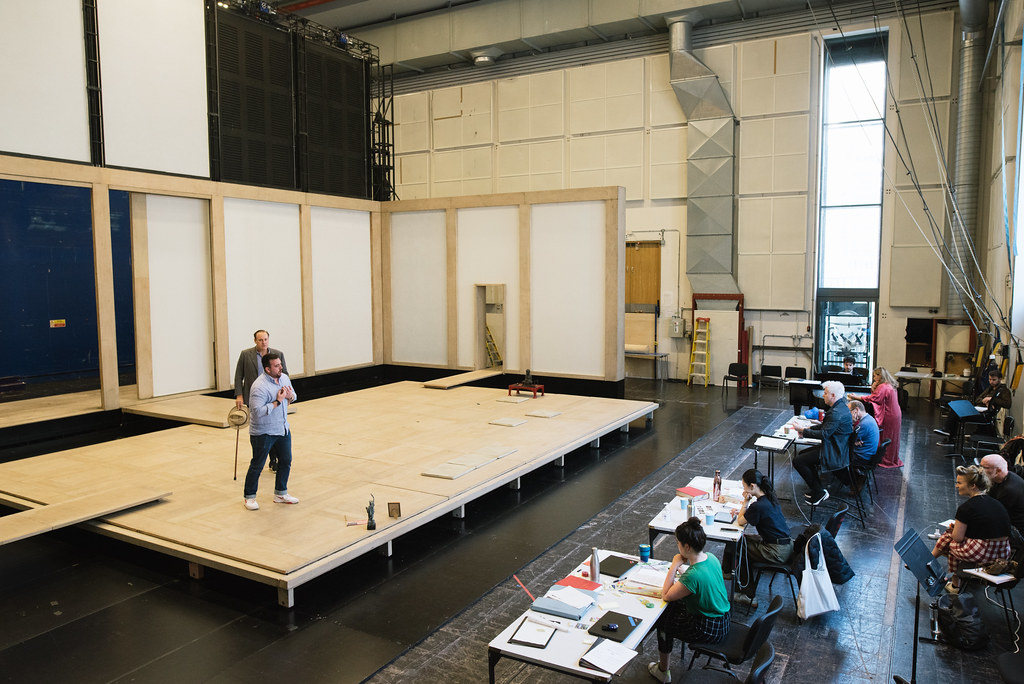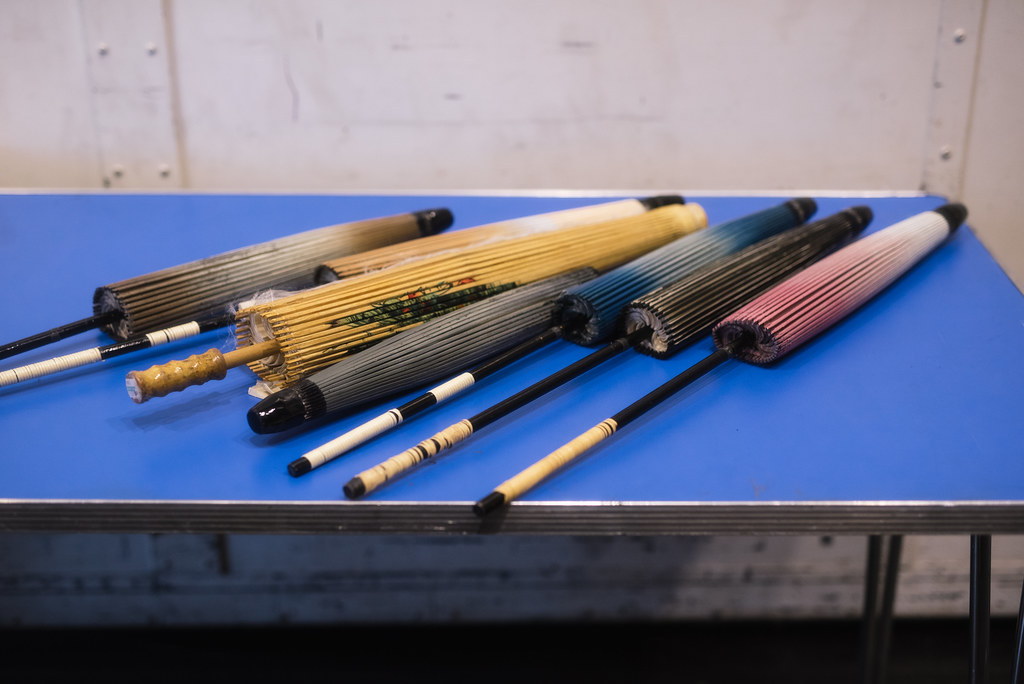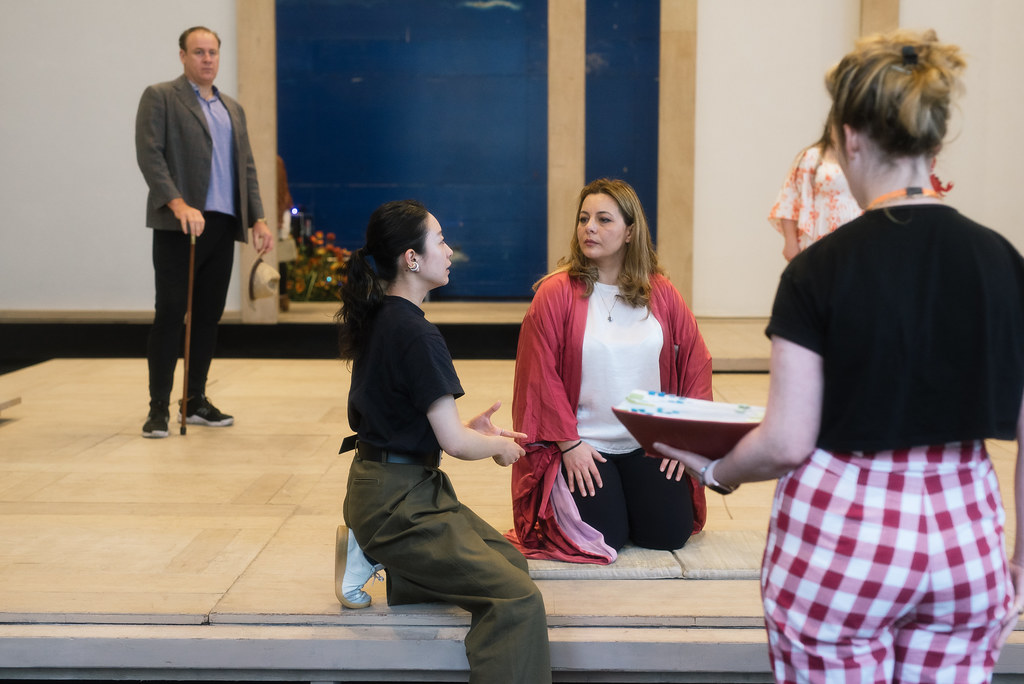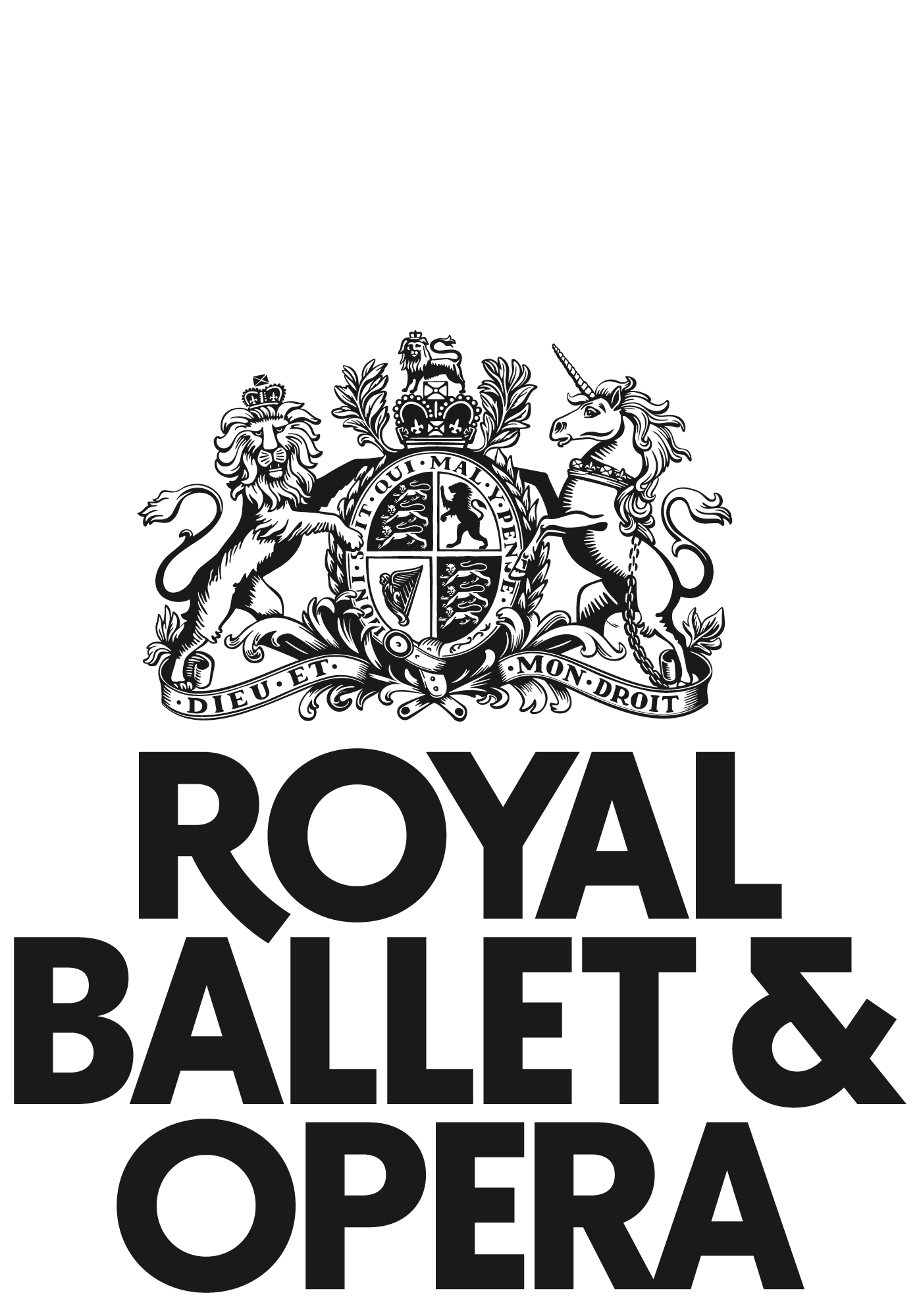The Evolution of Butterfly
by Flora Willson
When I sneak into the rehearsal room, I’m briefly alarmed to see a woman lying motionless, stretched out on the ground. Another is kneeling, statue-like, facing away from everyone. Neither speaks. There’s no music either – just a quiet rustle of activity behind tables strewn with coffee cups and laptops, notebooks and scores. And then suddenly, numerous hushed conversations stop and the collective focus shifts to the set, as Israeli conductor Dan Ettinger launches into Act II of Puccini’s Madama Butterfly.
The work that follows is all about detail: musical discussions of expressive nuance and phrasing; minute coordinations of scenery, props and score. ‘Could the cigarette case be closed but not snapped shut?’ asks Canadian revival director Dan Dooner at one point – a tiny change allowing a cigarette to be proffered at precisely the right moment during a fast-flowing dialogue. Most striking of all, though, is the finessing of the singers’ movements: from Kseniia Nikolaieva (Suzuki) being taught how to press down tobacco in a pipe, to Lianna Haroutounian (Butterfly) learning the exact angle and speed with which to offer a hefty turn-of-the-century lighter. ‘She’s a geisha; this is her métier’, Dooner points out, keen for the gesture to look practised and natural.

Working alongside Dooner and crucial to each of these physical adjustments is Sonoko Kamimura, the revival’s Japanese movement director. Her own background as a contemporary dancer is unmissable as she stands, ultra-poised, watching the singers, periodically stepping lightly onto the set to fine-tune how a prop is held, how large a gesture should be – even the angle of Butterfly’s hand as she conceals a giggle later in the act. ‘It’s more Japanese like this,’ Kamimura explains.

Puccini would have been delighted to see his opera receive such treatment. He was a composer fascinated by the expressive potential of particular settings: think of La bohème’s Paris, Tosca’s Rome or the rugged California of La Fanciulla del West – all with their own distinct musical atmospheres. In Madama Butterfly he proclaimed his intentions of representing ‘a true Japan’, attending performances given by the celebrated Japanese actress Sadayakko in Milan and seeking advice about Japanese folksongs as he worked on his score.
Yet alongside some real Japanese folk tunes that Puccini incorporated into the opera, he also made prominent use of a Chinese folksong, in a conflation of East Asian and South-East Asian countries into a single ‘Orient’ all too common in Europe around 1900. What’s more, neither Puccini nor his librettists had ever visited Japan; the main sources for the opera’s libretto were a short story and a play by two Americans; and their texts had been inspired by a semi-autobiographical novel by a French naval officer. Similarly, most early performances of the opera were given by casts consisting entirely of European and North American singers, wearing stylised make-up intended to make them look ‘Japanese’ – a practice now known as ‘yellow-face’ and considered disrespectful and offensive.
In these circumstances it’s hardly surprising that nearly 120 years after its 1904 premiere, Madama Butterfly now poses some serious challenges. ‘I think the potential for racism is in stereotypical portrayals of the Japanese characters’, Director of the Royal Opera Oliver Mears explains to me. ‘And that’s what we wanted to avoid with this.’ And it’s not only the opera itself that now finds itself in a world different to the one in which it was created, of course: for the past two decades, Madama Butterfly has been performed at Covent Garden in a 2002 production directed by Moshe Leiser and Patrice Caurier. The production’s return to the stage this season has been scheduled for around four years – but this 2022 outing is a revival with a difference, attempting to tackle some of the opera’s challenges head on.

‘Rather than cancelling the whole show, we really wanted to be in dialogue with it’, Mears enthuses, ‘and involve some Japanese voices in that discussion: see what they thought and get them to watch the DVD [of the production] – get some performers, get some academics, get some practitioners… And that came up with some concrete things that we could do to the show in terms of movement; and some adjustments to the costumes and wigs and makeup in particular. And that all feels really, really positive. It will never be a 100% authentic production because it never aspired to be. But it will be 1,000% more authentic than it was.’
This process of consultation has been about details rather than radical overhauls. Various costume modifications have been made to capture more accurately the traditional dress worn at a wedding ceremony during the period in which the production is set, for instance, and to reflect the subtle ways in which the length of robes signified social status. The make-up has also been adjusted (‘you would only wear geisha make-up if you’re a geisha’, Mears tells me) to remove any hints of caricature. The result Mears hopes for? ‘I think what will be good is that some of the more over the top makeup or costumes will be toned down, and will be more real. And I think that will elicit a reaction that is more real because it will feel more real. And, that’s all to the good in terms of having a deeper engagement with characters.'

Dooner and Kamimura are similarly committed to finding the real people within the opera. Musing on the stereotypical ‘Japanese’ movement so often incorporated into European and North American performances of Madama Butterfly, Kamimura explains quietly: ‘The thing is, for us, as Japanese [people], it becomes so fake, you know? It’s, like, nonsense for us sometimes. But that’s why I want to dig in with the cast – why this motivation, why this movement? This detail is the most important part to how I’m participating.’ Both she and Dooner are keen to emphasise the dignity and inner strength of Butterfly herself. ‘She believes in Pinkerton’, suggests Dooner, ‘the way that other people believe in God: unquestioningly – and she fights for it. And the fact that she’s betrayed by her god doesn’t make her more foolish. And that’s the course I choose to take because it opens up a sympathetic human connection between her and the audience.’

Inevitably, the ethical and practical complexities of staging an opera such as Madama Butterfly in a changed geopolitical climate, over a century after its creation, cannot be ‘solved’ in a single revival. The advocacy group BEATS (British East & South-East Asians in Theatre & on Screen) has called recently for colour-conscious casting in opera, spoken theatre and on screen, stressing that ‘casting a white actor in a specifically non-white role, known as “whitewashing”, is regressive, as it perpetuates the historical and present exclusion of Artists of Colour from the stage, and limits the ability of Artists of Colour to participate in the telling of their own stories on stage. In opera particularly, Artists of Colour have historically found access and opportunities to be highly limited.’
BEATS advocates for the removal of outdated practices and the improvement of representation onstage in opera, and they have been involved in the discussions for this Madama Butterfly revival. The group told me that it ‘welcomes certain efforts that ROH have made to update their revival of a twenty-year-old production, including removing yellow-face make-up, and employing ESEA costume and movement consultants.’ But significant concerns nonetheless remain for BEATS, who ‘urge the ROH and all opera houses to undertake a thorough review of their casting processes to ensure much better and more appropriate representation on and off stage.’
Mears is open about the complexities around operatic casting in the 21st century: ‘The Royal Opera has a role in defining the future of opera: which stories are told, how they are interpreted and who gets to make them. Over the last twelve months, The Royal Opera has worked closely with TONIC, led by Lucy Kerbel and Fay Jennett, to interrogate our casting practice as it relates to race, equality and gender. We are opposed to pigeonholing singers into certain roles: to do so would be limiting and reductive. At the same time, we do not ignore ethnicity entirely. Instead, we are committed to colour-conscious casting, an approach which considers the nuance required to portray each and every story with authenticity and respect, from casting to choosing the creative team itself.'
Given its origins, it is a moot point whether Madama Butterfly can ever wholly fulfil Puccini’s hopes of representing a ‘true Japan’. But this revival is an important step in the ongoing process of ensuring that Puccini’s opera continues to speak to audiences movingly and respectfully. After all, as Kamimura put it, ‘Japanese [people] are human beings, right? Before being Japanese, they’re human beings.’

Dr Flora Willson is a musicologist, writer and broadcaster. She is a lecturer in the Music department at King’s College London, where she specialises in 19th-century opera history, and writes about classical music for publications including the Guardian and Opera magazine. Flora also appears regularly on BBC Radio 3 and on Royal Opera House Live cinema relays.
To find out more about the opera and the process behind the 2022 Madama Butterfly revival, you can listen to excerpts from the ROH Butterfly Insight event, held live in the Clore Studio on May 31, below.
Royal Opera House Covent Garden Foundation, a charitable company limited by guarantee incorporated in England and Wales (Company number 480523) Charity Registered (Number 211775)
